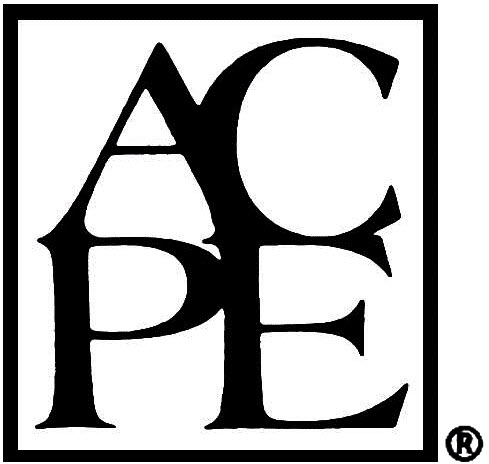The Handling of Hazardous Drugs
Compounding CE for Pharmacists
Are you a Pharmacy Tech? Check out the Pharmacy Tech version of this course.
Course Summary
Drugs used to treat cancer, some antiviral drugs, hormone agents, and bioengineered drugs, are dangerous to pharmacists and other healthcare workers because of their toxicity. Exposure to these hazardous drugs in the course of professional practice can injure the healthcare worker. Proper precautions and care are necessary to prevent these occupational injuries. Pharmacists and pharmacy staff can appreciate the importance of handling hazardous drugs properly through a brief review of the history of hazardous drugs and the development of guidelines for their proper handling.
Review the latest regulations relating to the handling of hazardous drugs.
Identify the importance of regulations and standards in handling hazardous drugs for the safety of patients, pharmacy staff, and the environment.
Describe the complexity of the hazardous drug regulations for staff working in a hazardous compounding pharmacy or looking to start one.
Describe the procedures to follow in the event of exposure to hazardous drugs.
Course Syllabus
I. Introduction
II. History of Hazardous Drugs
III. Importance of HDs to Pharmacy Staff
IV. USP 800
1. Facilities and Engineering Controls
2. Receipt
3. Storage
4. Compounding
5. ISO Class 7 buffer room with ISO class 7 ante-room
6. Environmental Quality and Control
7. Personal Protective Equipment
8. Disposal of Used PPE
9. Hazard Communication Program
10. Personnel Training
11. Receiving
12. Labeling, Packaging, Transport, and Disposal
13. Dispensing Final Dosage Forms
14. Compounding
15. Deactivating, Decontaminating, Cleaning, and Disinfecting
16. Deactivation
17. Decontamination
18. Cleaning
19. Disinfection
20. Spill Control
21. Medical Surveillance
22. Follow-Up Plan
23. Clinical setting variation
24. Patient Counseling on the Handling of Hazardous Drugs
V. Summary
- Read the course objectives and faculty planner disclosure
- Read the course material
- Complete the post-test with a minimum score of 70% and complete the course evaluation form.
- Results are automatically submitted to CPE Monitor
Faculty Planner Disclosure
The following individuals were involved in the development of this activity: Susan DePasquale, MSN, PMHNP-BC, and Steve Malen, PharmD. There are no financial relationships relevant to this activity to report or disclose by any of the individuals involved in the development of this activity.
Unlabeled Use Disclosures
The information provided in this course is general in nature and it is solely designed to provide participants with continuing education credit(s). This course and materials are not meant to substitute for the independent, professional judgment of any participant regarding that participant’s professional practice, including but not limited to patient assessment, diagnosis, treatment and/or health management. Medical and pharmacy practices, rules, and laws vary from state to state, and this course does not cover the laws of each state; therefore, participants must consult the laws of their state as they relate to their professional practice. Healthcare professionals, including pharmacists and pharmacy technicians, must consult with their employer, healthcare facility, hospital, or other organization, for guidelines, protocols, and procedures they are to follow. The information provided in this course does not replace those guidelines, protocols, and procedures but is for academic purposes only, and this course’s limited purpose is for the completion of continuing education credits. Participants are advised and acknowledge that information related to medications, their administration, dosing, contraindications, adverse reactions, interactions, warnings, precautions, or accepted uses are constantly changing, and any person taking this course understands that such person must make an independent review of medication information prior to any patient assessment, diagnosis, treatment and/or health management. Any discussion of off-label use of any medication, device, or procedure is informational only and such uses are not endorsed hereby. Nothing contained in this course represents the opinions, views, judgments, or conclusions of RxCe.com LLC. RxCe.com LLC is not liable or responsible to any person for any inaccuracy, error, or omission with respect to this course, or course material.
Computer Hardware/Software Requirements
Please ensure the device you plan to use meets these requirements and specifications:
- Operating System: Windows 7,8,10, or 11 /Mac OS X 10.9 or later/iOS/Android
- Supported Browsers: Microsoft Edge, Firefox, Google Chrome, Safari, Opera
- A connection to the internet
- For Live Webinars or Conferences: GoToWebinar application for iOS, Android, Mac, or PC. You cannot 'call into' a live conference.
Rating: 4.96/5
Based on the ratings of 327 customers
- Target Audience: Pharmacist
- Secondary Audiences: This educational activity is also for other healthcare professionals, such as nurses, physicians, or others who may be part of a healthcare team and may be interested in this educational topic. A healthcare team approach to patient care may be discussed in this activity, as applicable. No state board or professional organization has evaluated this activity to determine whether it meets the continuing education requirements of nurses, physicians, or other professions not listed under the “Target Audience” described above. Always verify with individual employers or supervisors whether they will accept this educational activity upon completion.
- Contact Hours: 2.0 (0.2 CEUs)
- Activity Release Date: 12/10/2022
- Activity Expiration Date: 12/10/2025
- Activity Type: Knowledge
- UAN: 0669-0000-22-076-H07-P
- Topic: Compounding
- CeBroker Number: 20-977778
Faculty:

RxCe.com, LLC is accredited by the Accreditation Council for Pharmacy Education as a provider of continuing pharmacy education.